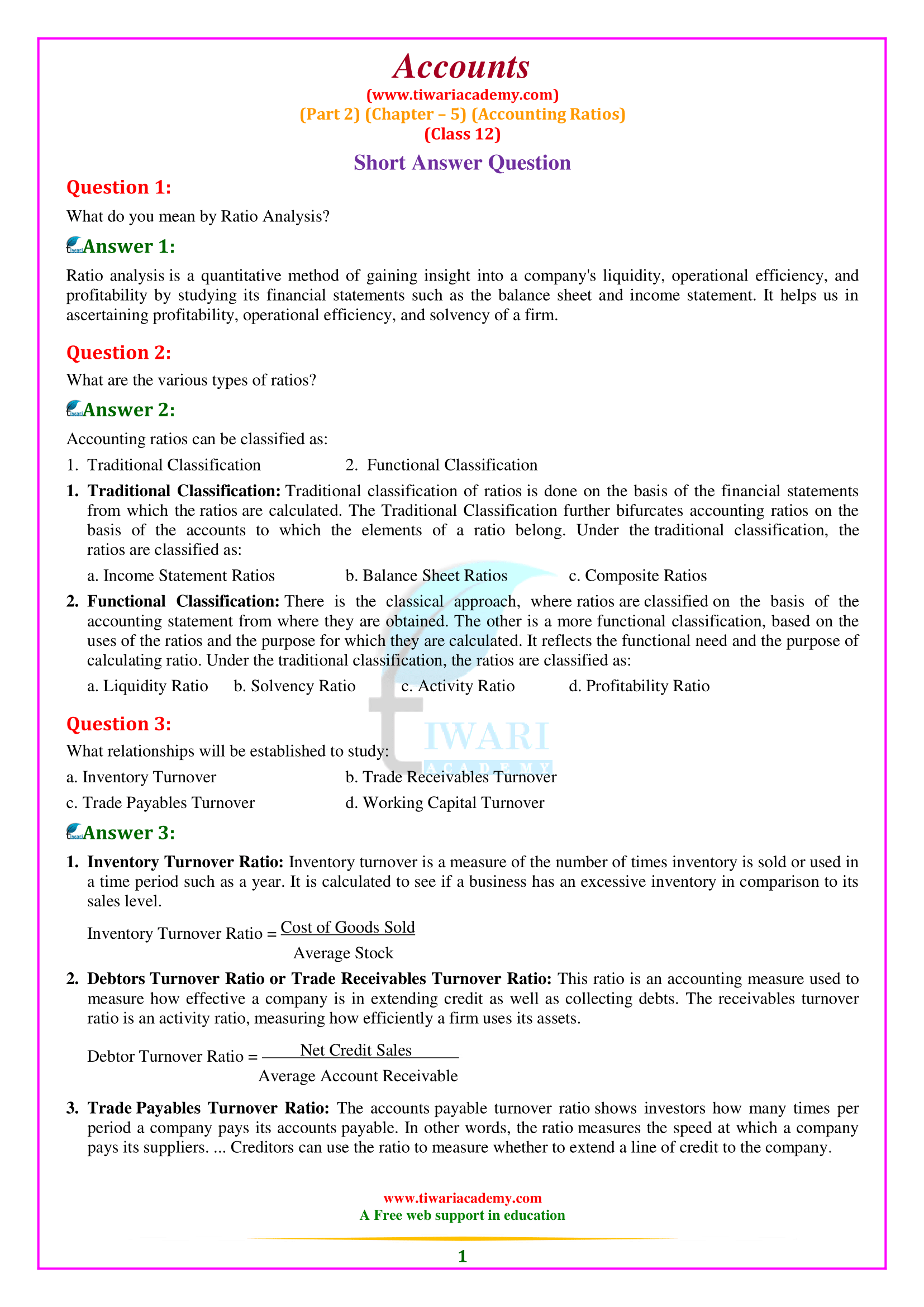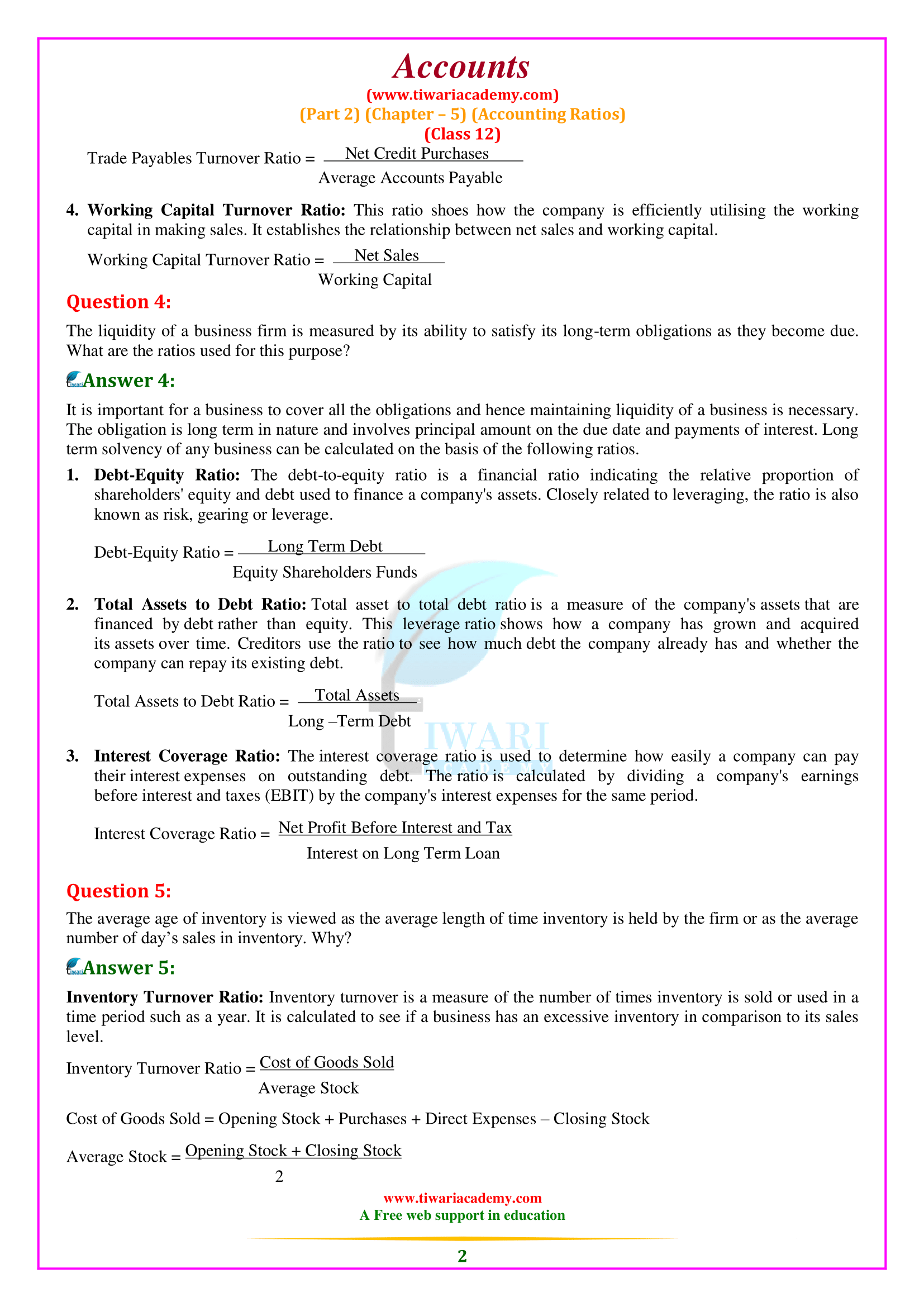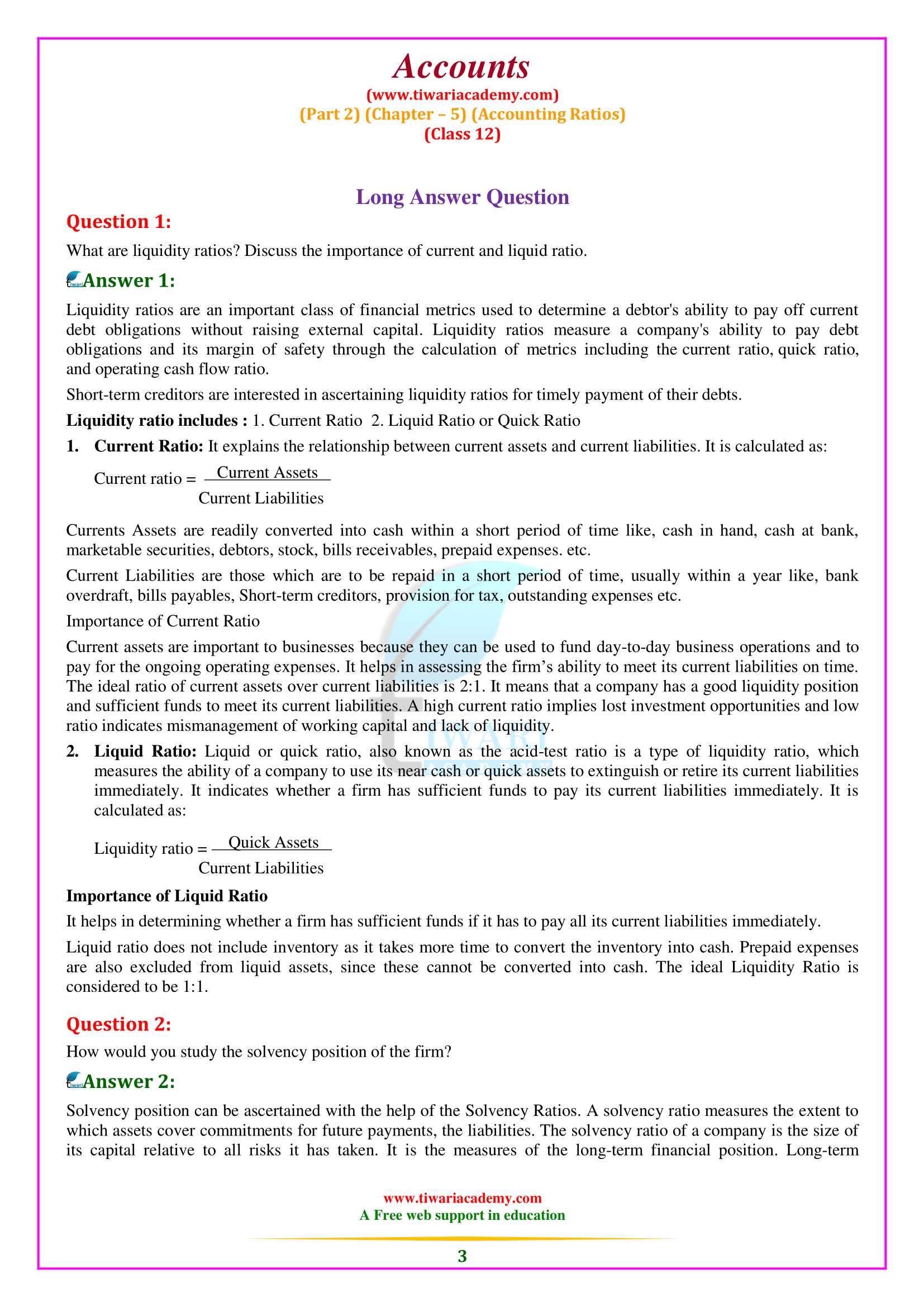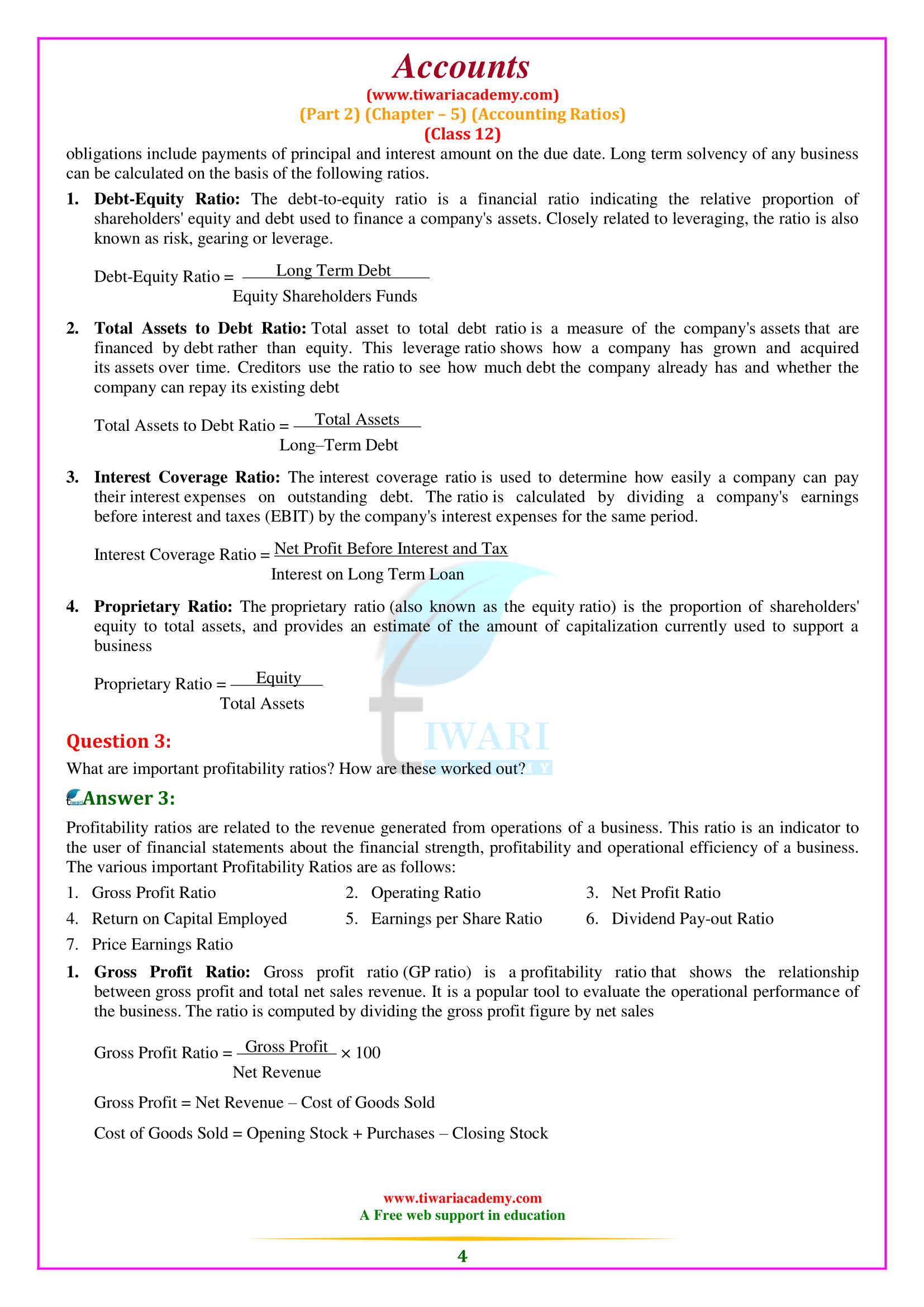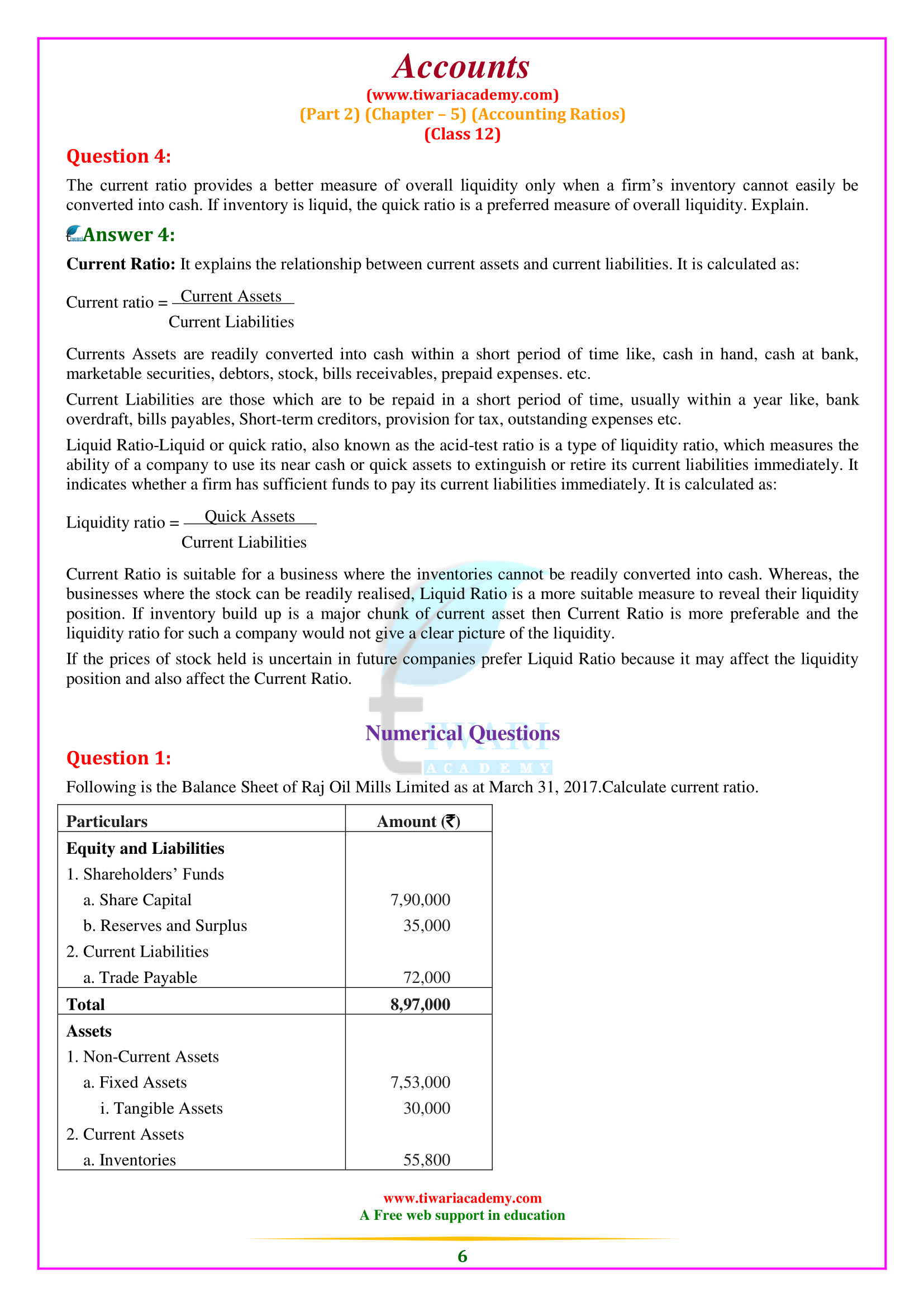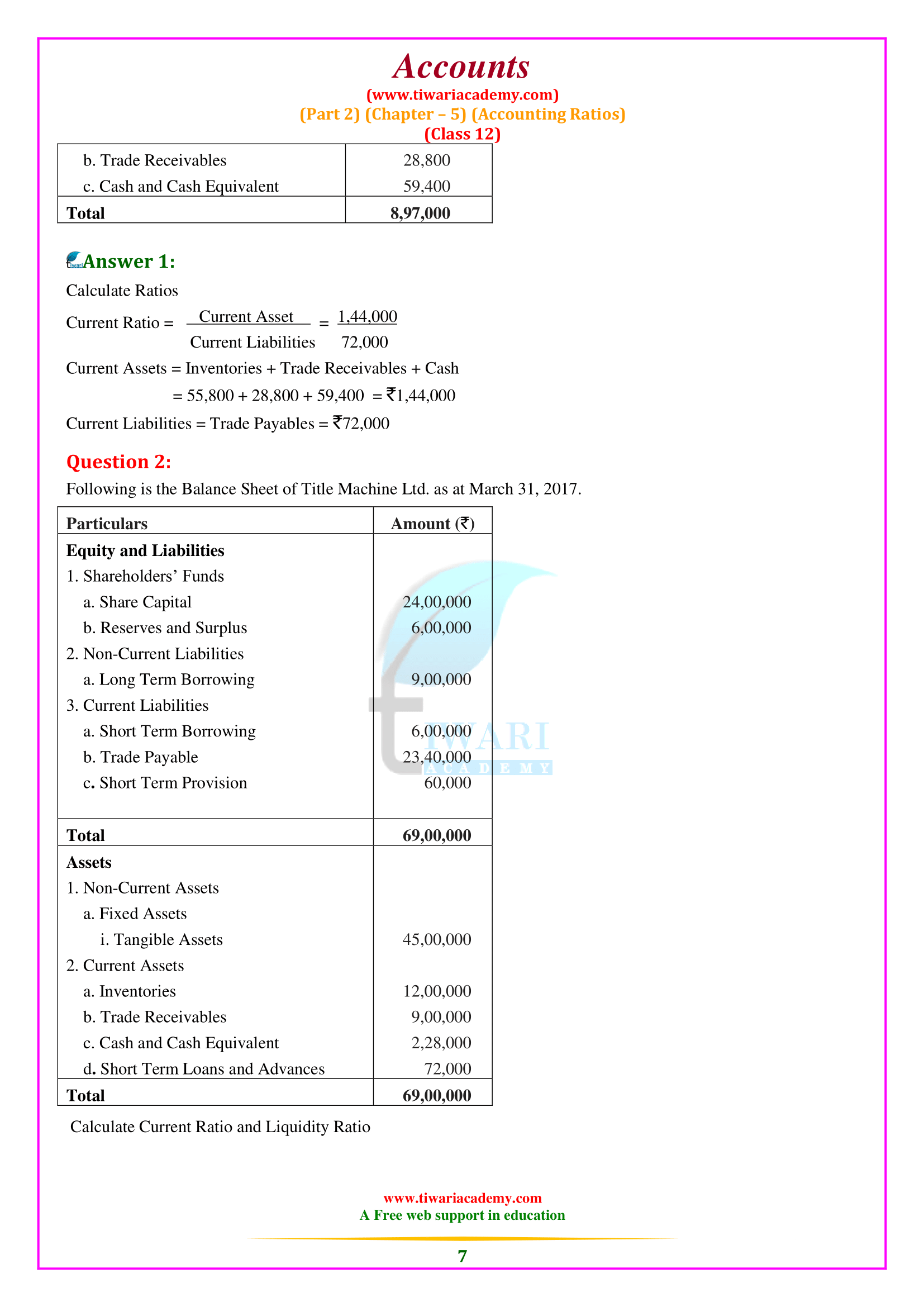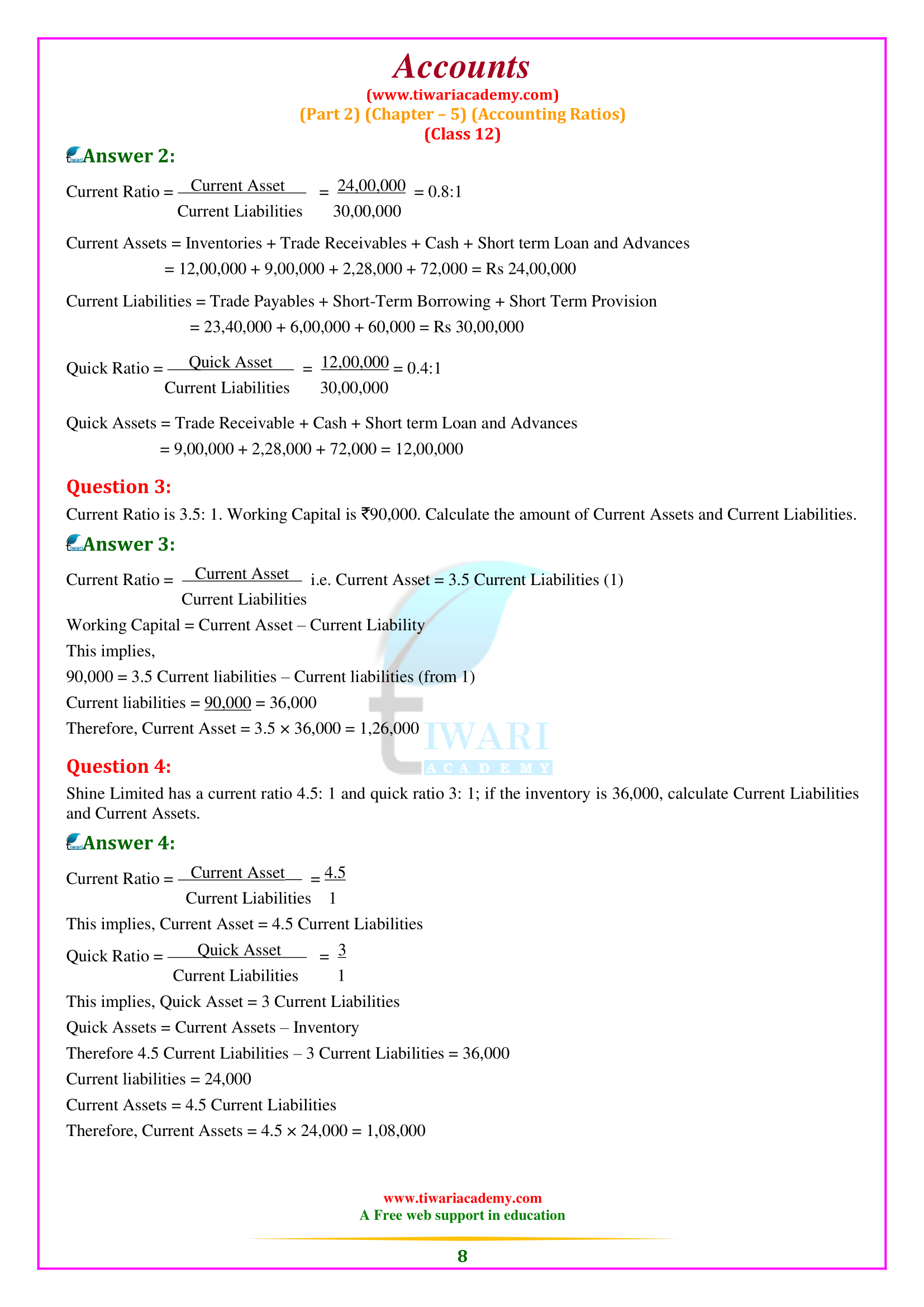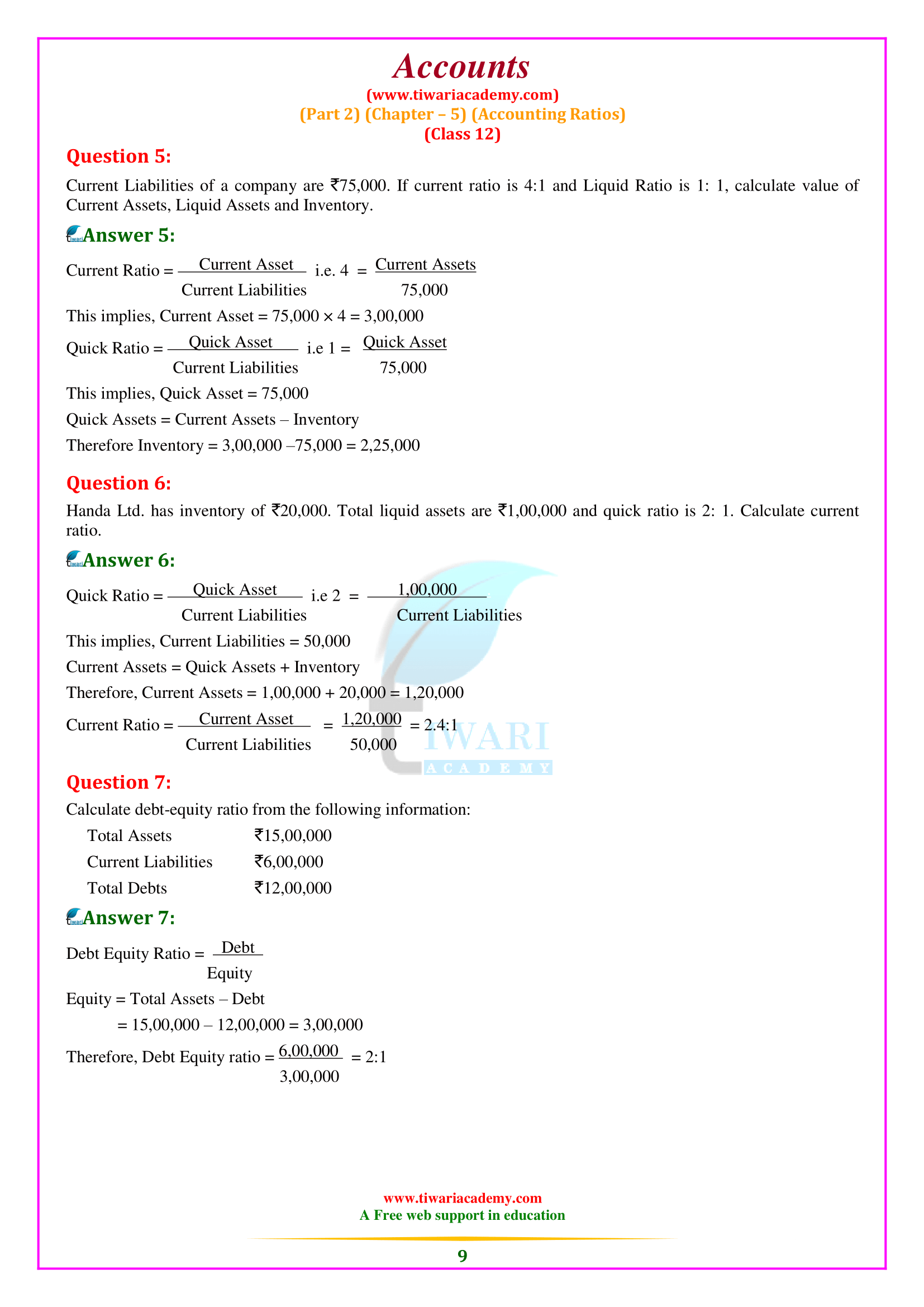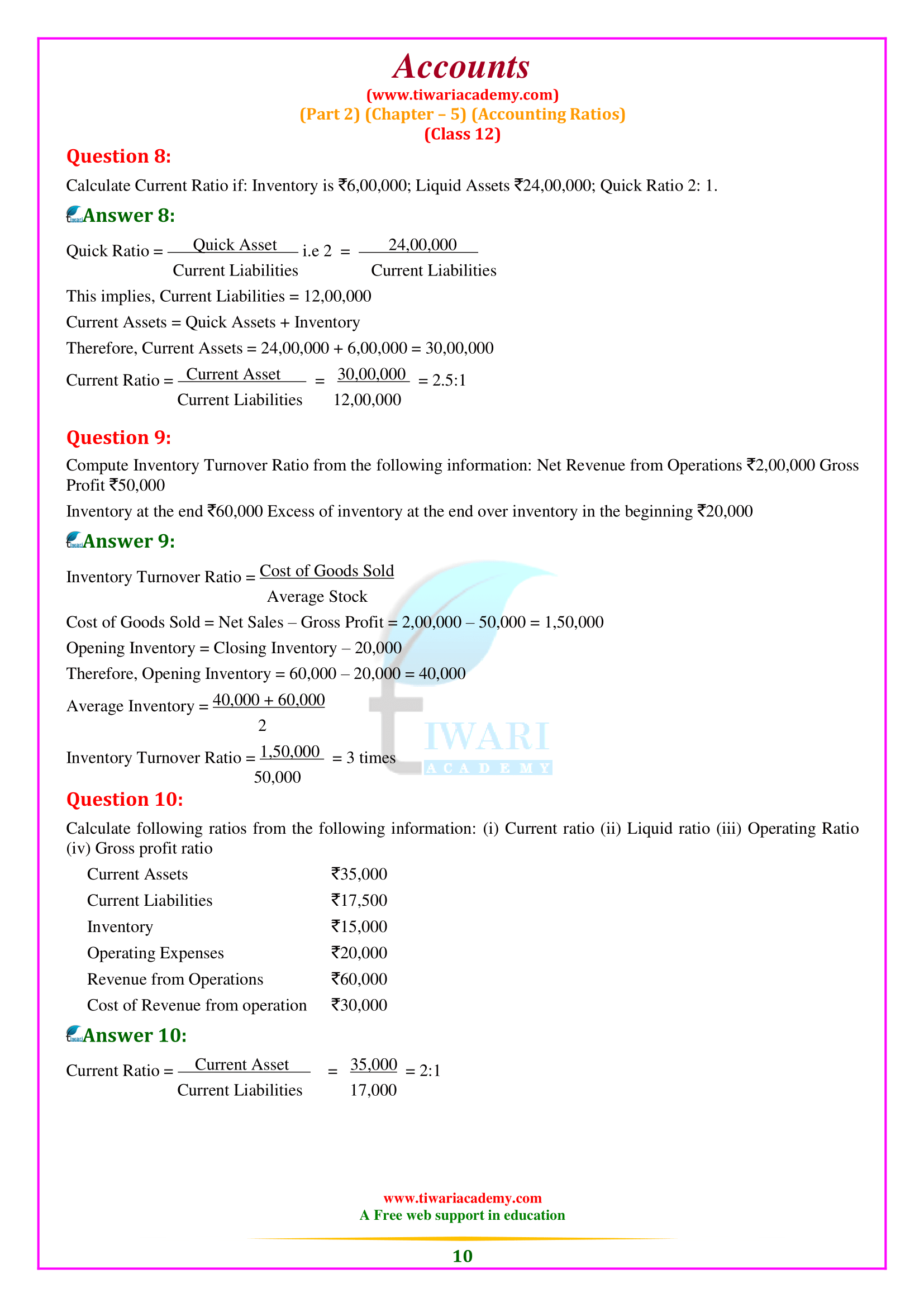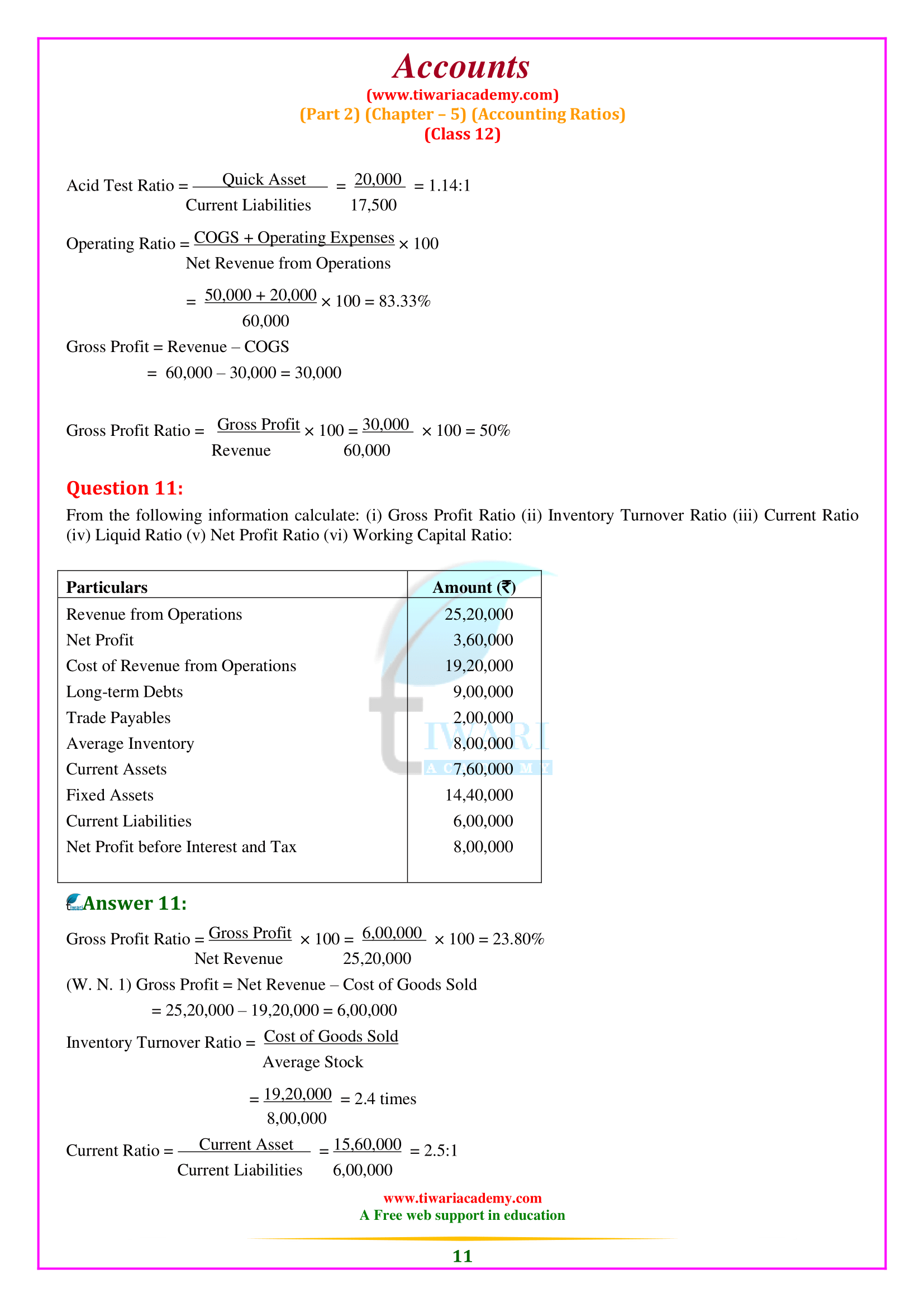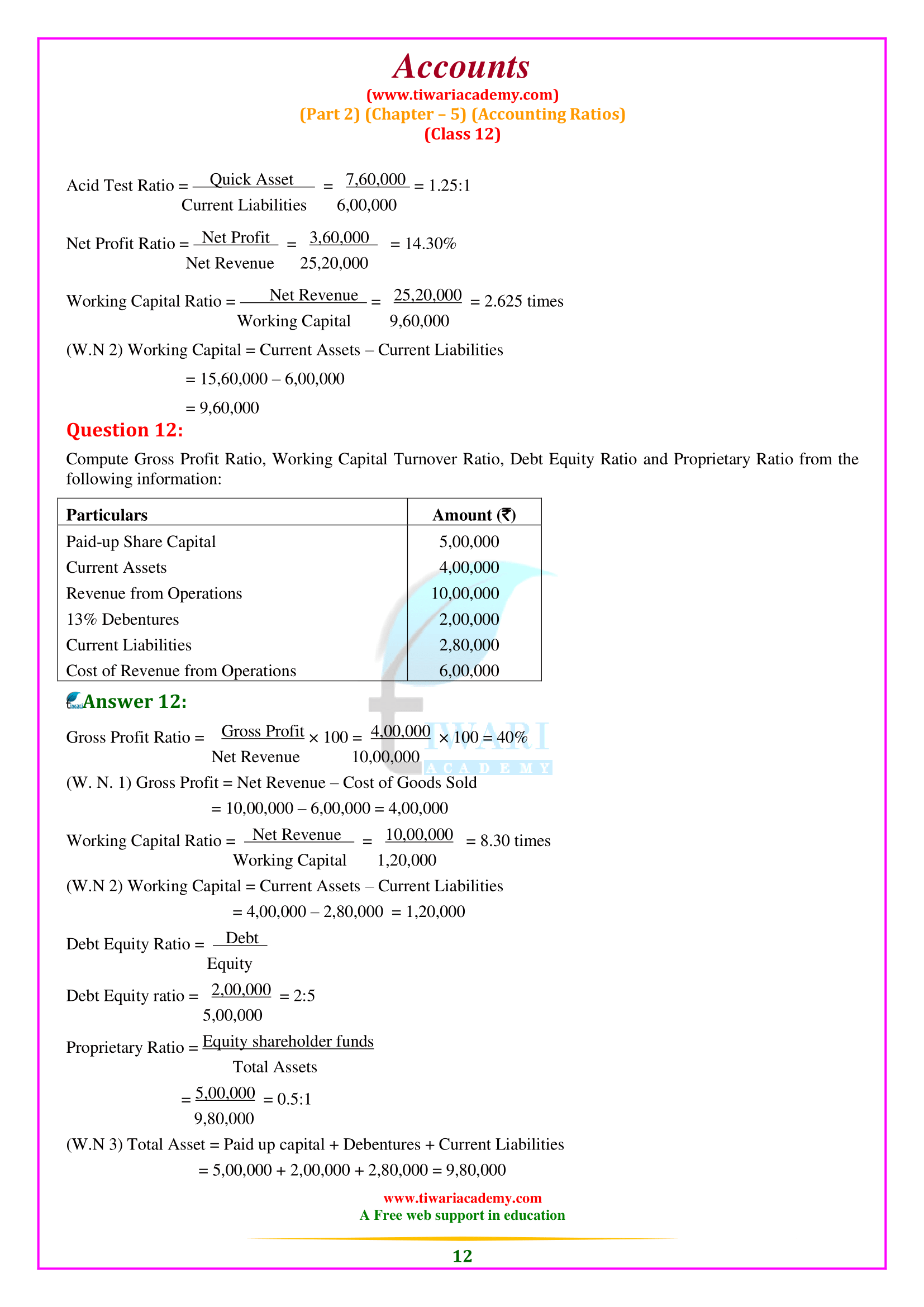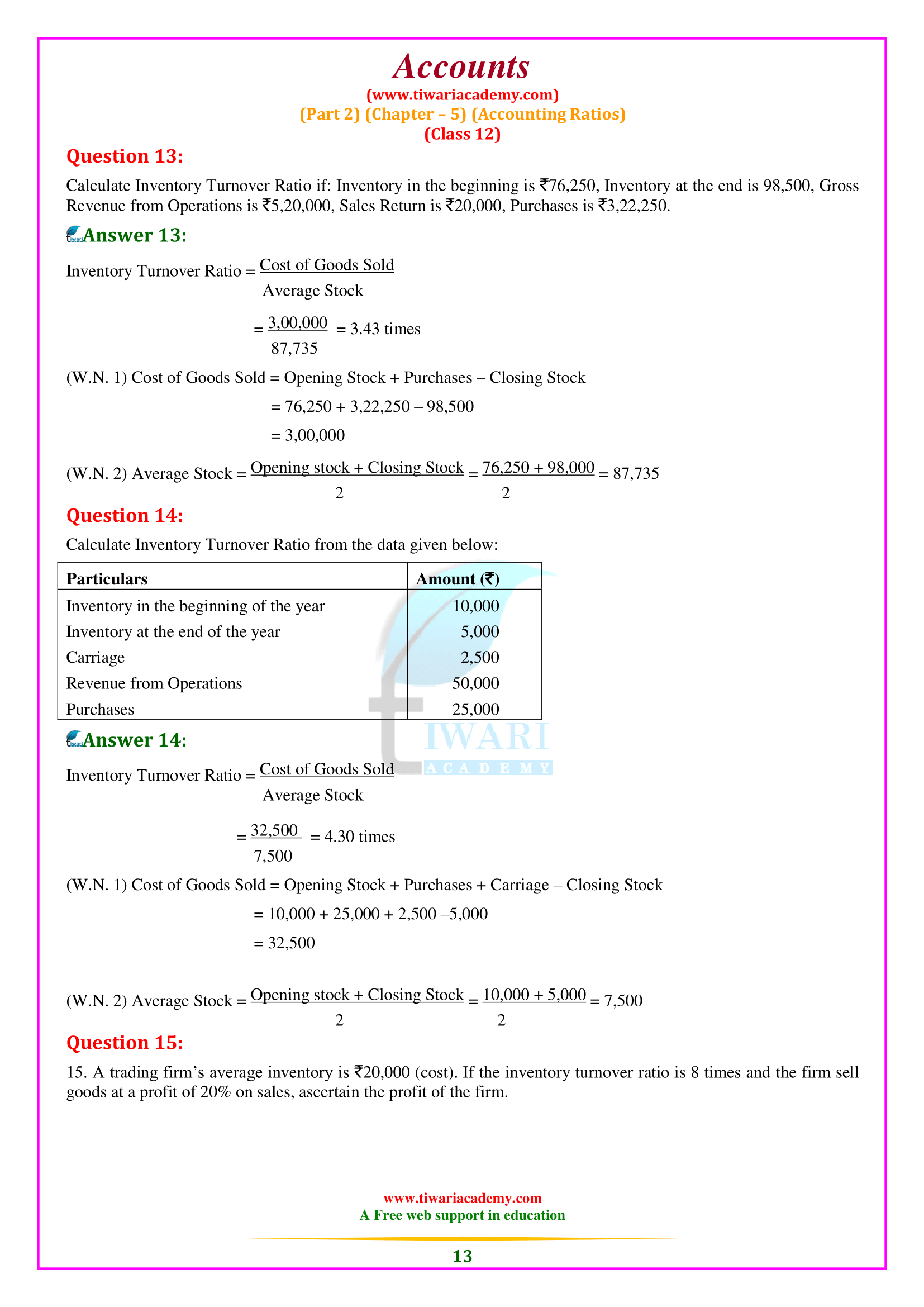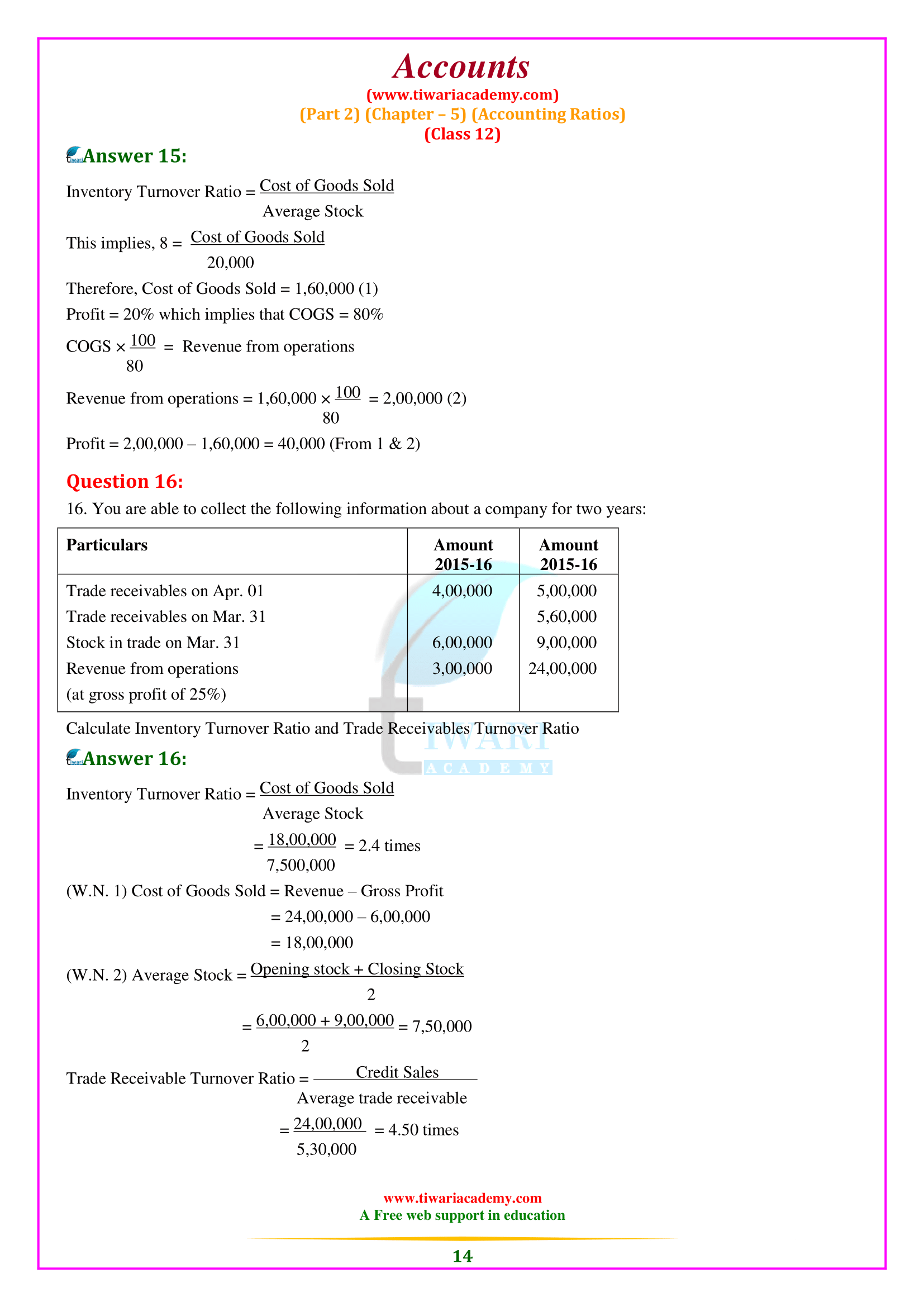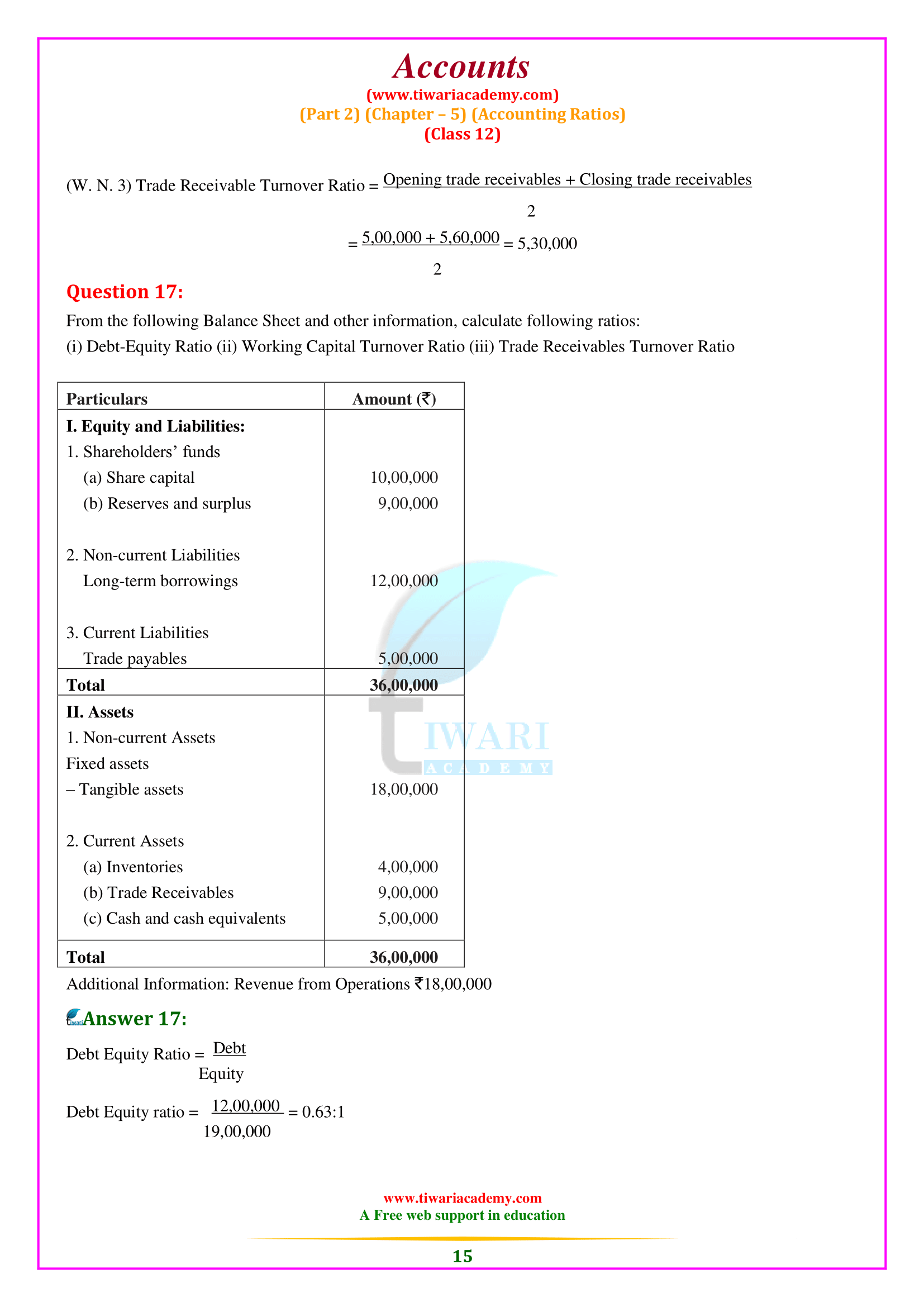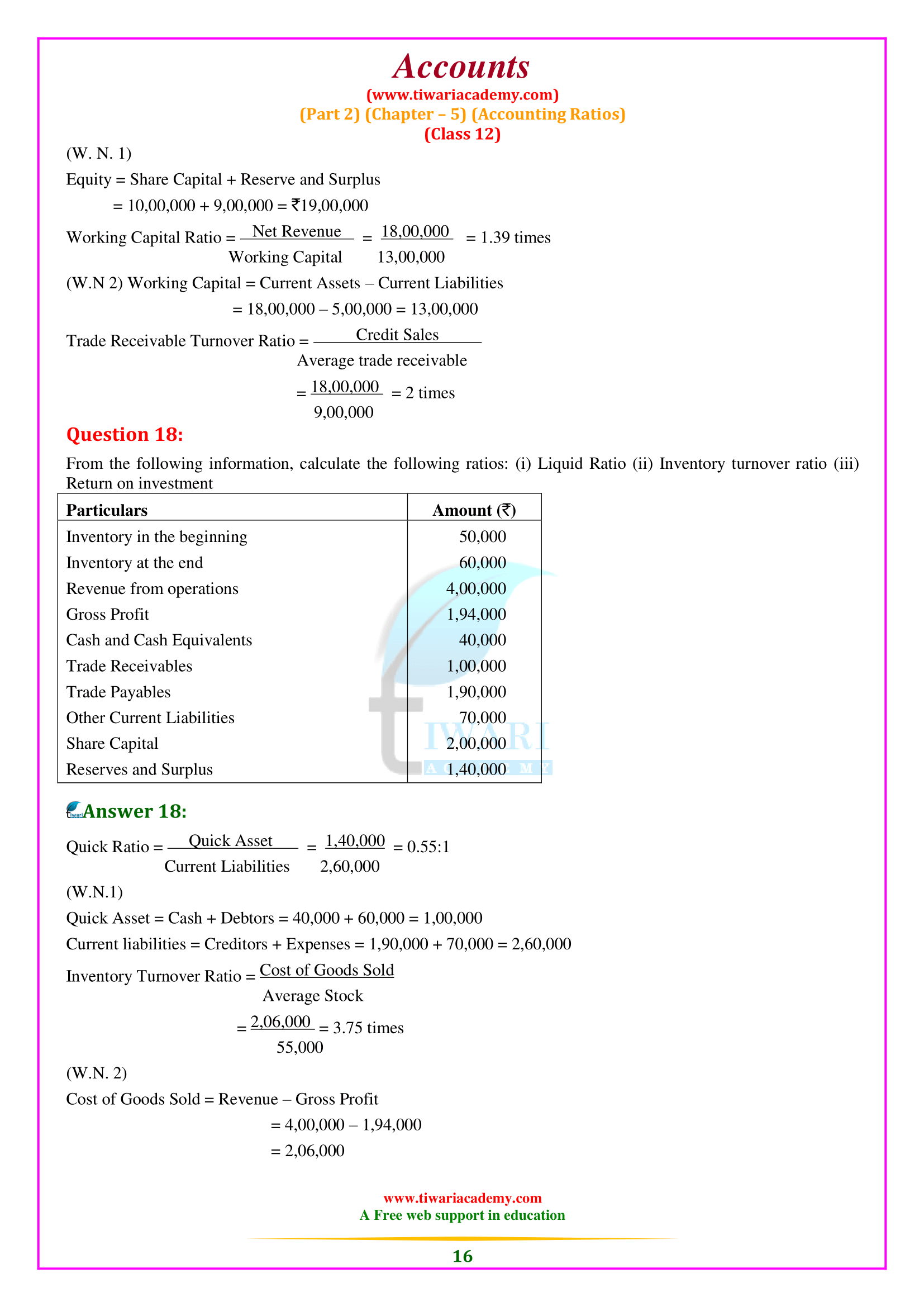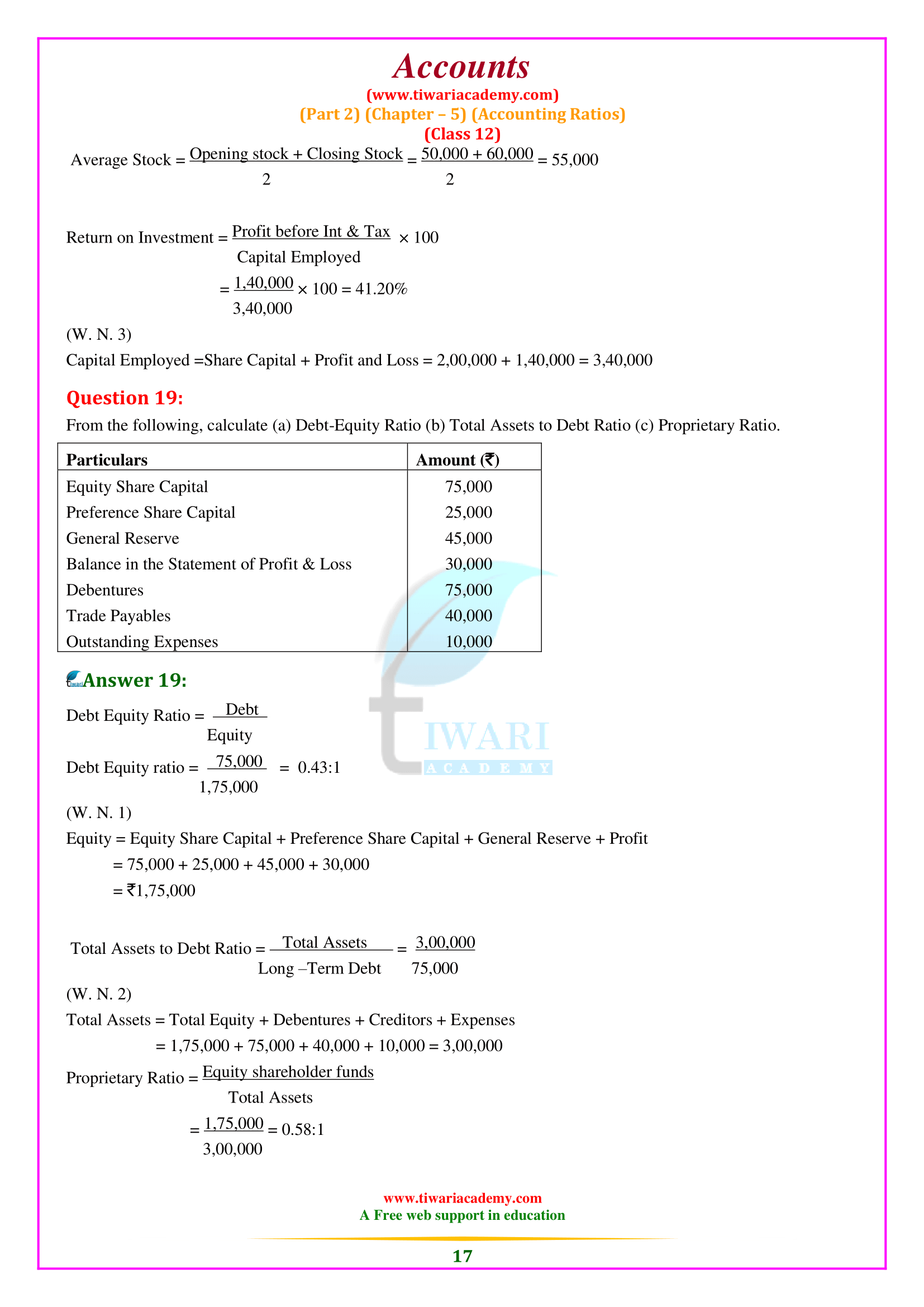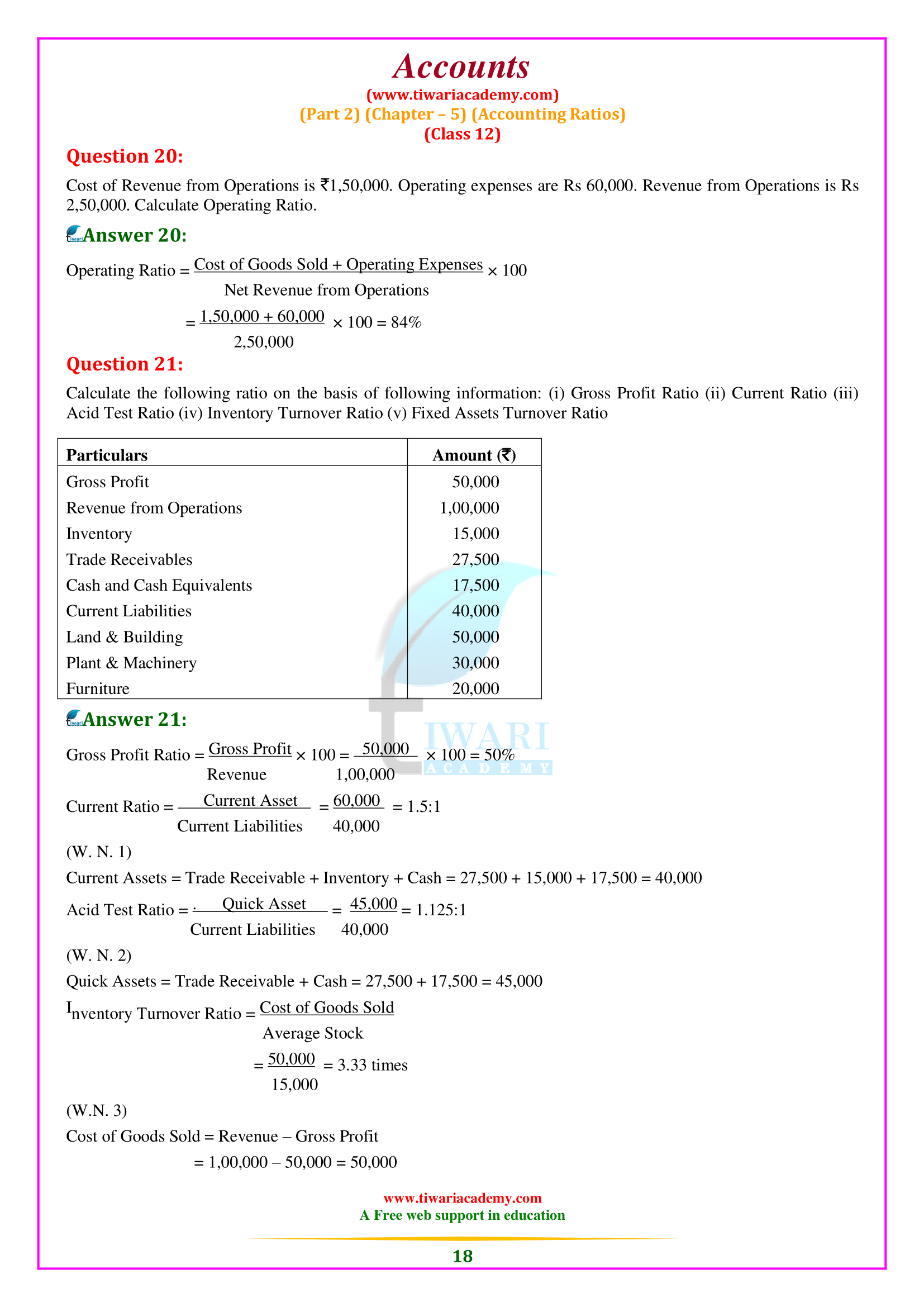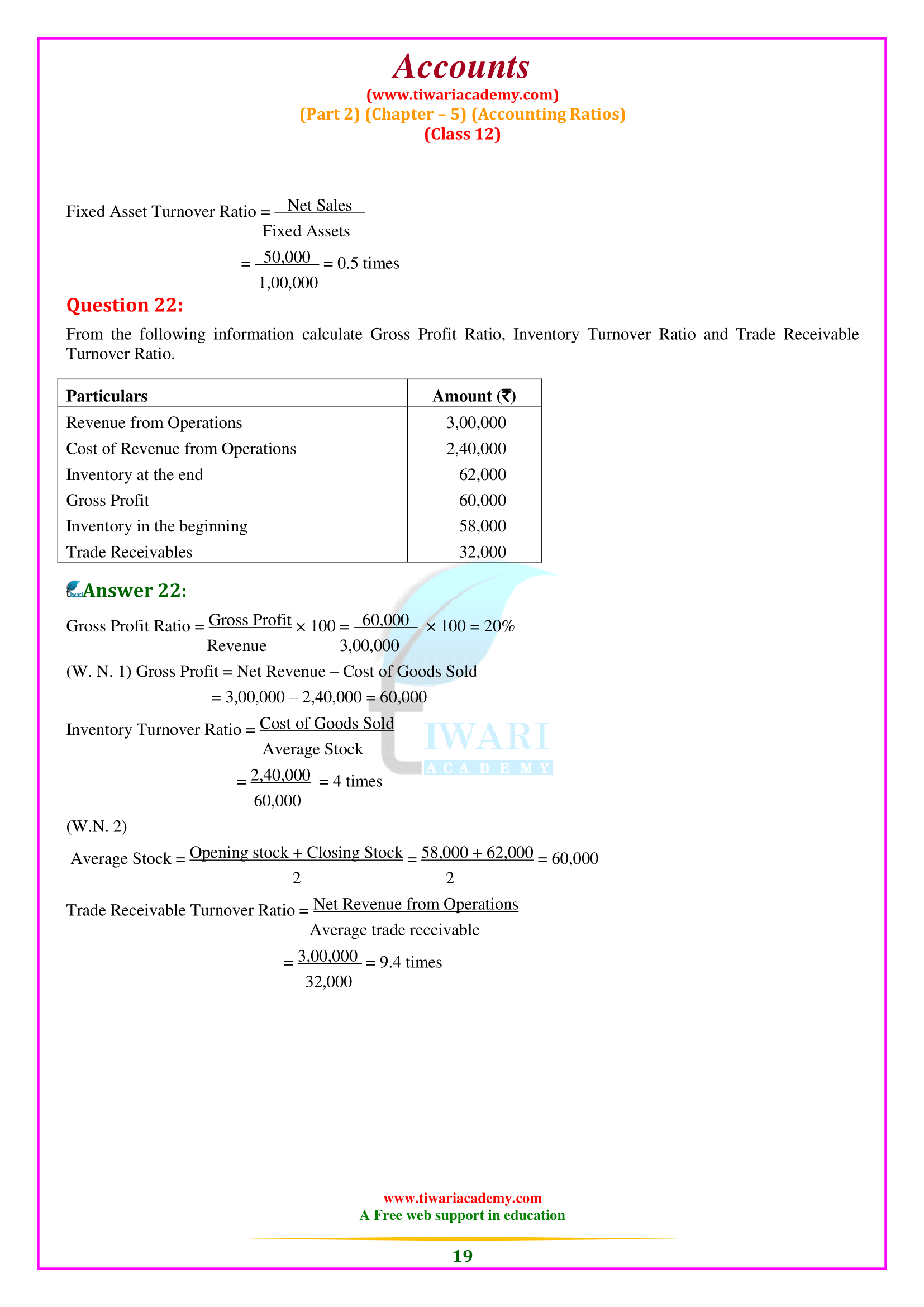NCERT Solutions for Class 12 Accountancy Part 2 Chapter 5 Accounting Ratios. Definition and formulae of all type of ratio finding techniques are given in chapter 5 of class 12 accounts part 2. Students can download study material and notes for academic session 2025-26 based on part 2 chapter 5 of 12th accounts. All the question answers of exercises are given with complete explanation of each questions. numerical parts are solved applying proper accounting ratio formula.
Class 12 Accountancy Part 2 Chapter 5 Question Answers
Class 12 Accountancy Part 2 Chapter 5 Accounting Ratios
| Class: 12 | Accountancy (Part 2) |
| Chapter: 5 | Accounting Ratios |
| Contents: | NCERT Solutions and Notes |
What are Accounting Ratios?
Accounting ratios are an important tool for financial statement analysis. A ratio is a mathematical number that is calculated as a reference to the relationship of two or more numbers and can be expressed as a fraction, ratio, percentage, and several times. When a number is calculated by referencing two accounting numbers derived from the financial statements, it is called an accounting ratio.
It should be observed that the accounting ratio displays the relationship, if any, between the accounting numbers extracted from the financial statements. Ratios are essentially derived numbers and their efficacy depends to a large extent on the original numbers from which they are calculated. Therefore, if there are some errors in the financial statements, the derived numbers will also present an incorrect scenario in the context of ratio analysis. Besides, a ratio should be calculated using numbers that are meaningfully correlated. Ratios calculated using two unrelated numbers would hardly serve any purpose.
Objectives of Ratio Analysis
Ratio analysis is an essential part of the interpretation of the results revealed by the financial statements. It provides important financial information to users and indicates areas that need to be investigated. Ratio analysis is a technique that involves reassembling data by applying arithmetic relations, although its interpretation is a complex matter. This requires a good understanding of the form and rules used to prepare the financial statement. Once done effectively, it provides a lot of information that helps the analyst:
- Know the areas of business that require more attention.
- Know the possible areas that can be improved with effort in the desired direction.
- Provide a deep analysis of profitability, liquidity, business efficiency, and levels of efficiency.
- Provide information to perform cross-sectional analysis comparing performance with the best industry standards.
- Provide information derived from financial statements useful for making future estimates and projections.
Advantages of Ratio Analysis
The ratio analysis if properly done improves the user’s understanding of the efficiency with which the business is being conducted. The numerical relationships throw light on many latent aspects of the business. If properly analysed, the ratios make us understand various problem areas as well as the bright spots of the business. The knowledge of problem areas help management take care of them in future. The knowledge of areas which are working better helps you improve the situation further. It must be emphasised that ratios are means to an end rather than the end in themselves. Their role is essentially indicative and that of a whistle blower. There are many advantages derived from ratio analysis.
Limitations of Ratio Analysis
Since ratios are derived from financial statements, any weakness in the original financial statements will take the derivative analysis as ratio analysis. Therefore, the limitations of financial statements also constitute the limits of ratio analysis. Therefore, to interpret the ratio, the user must know the rules that are followed in the preparation of financial statements, and also their nature and limitations.
